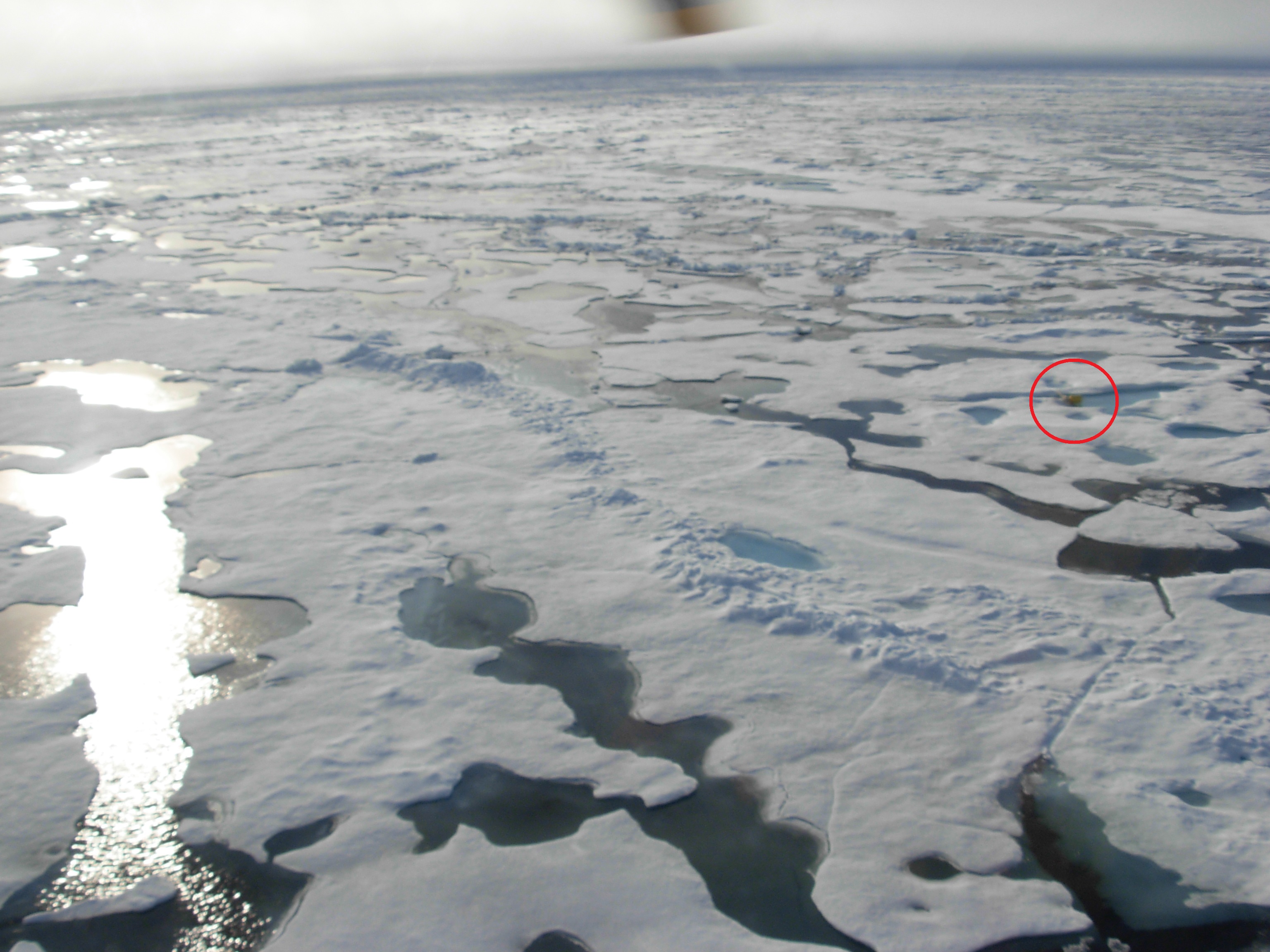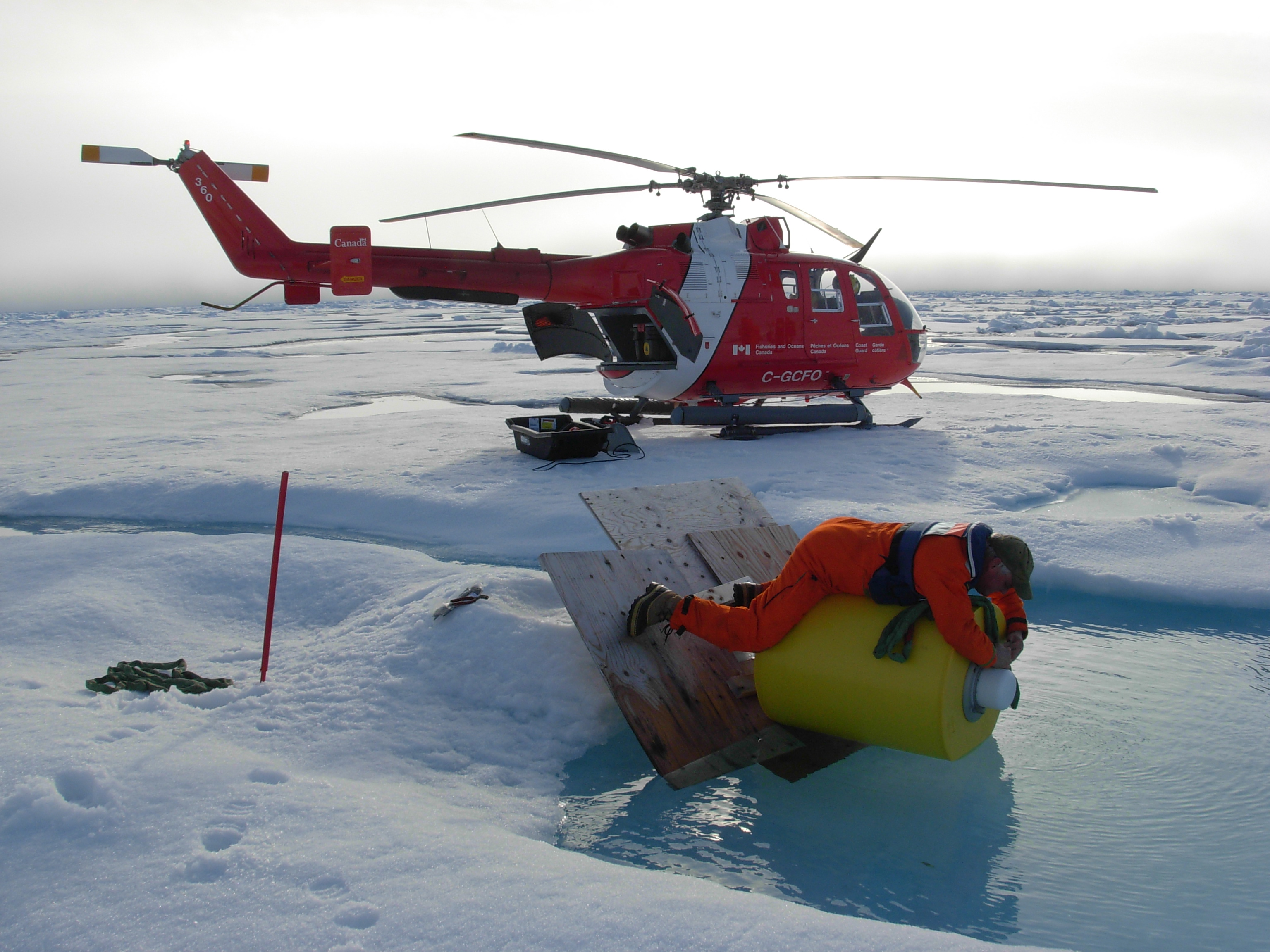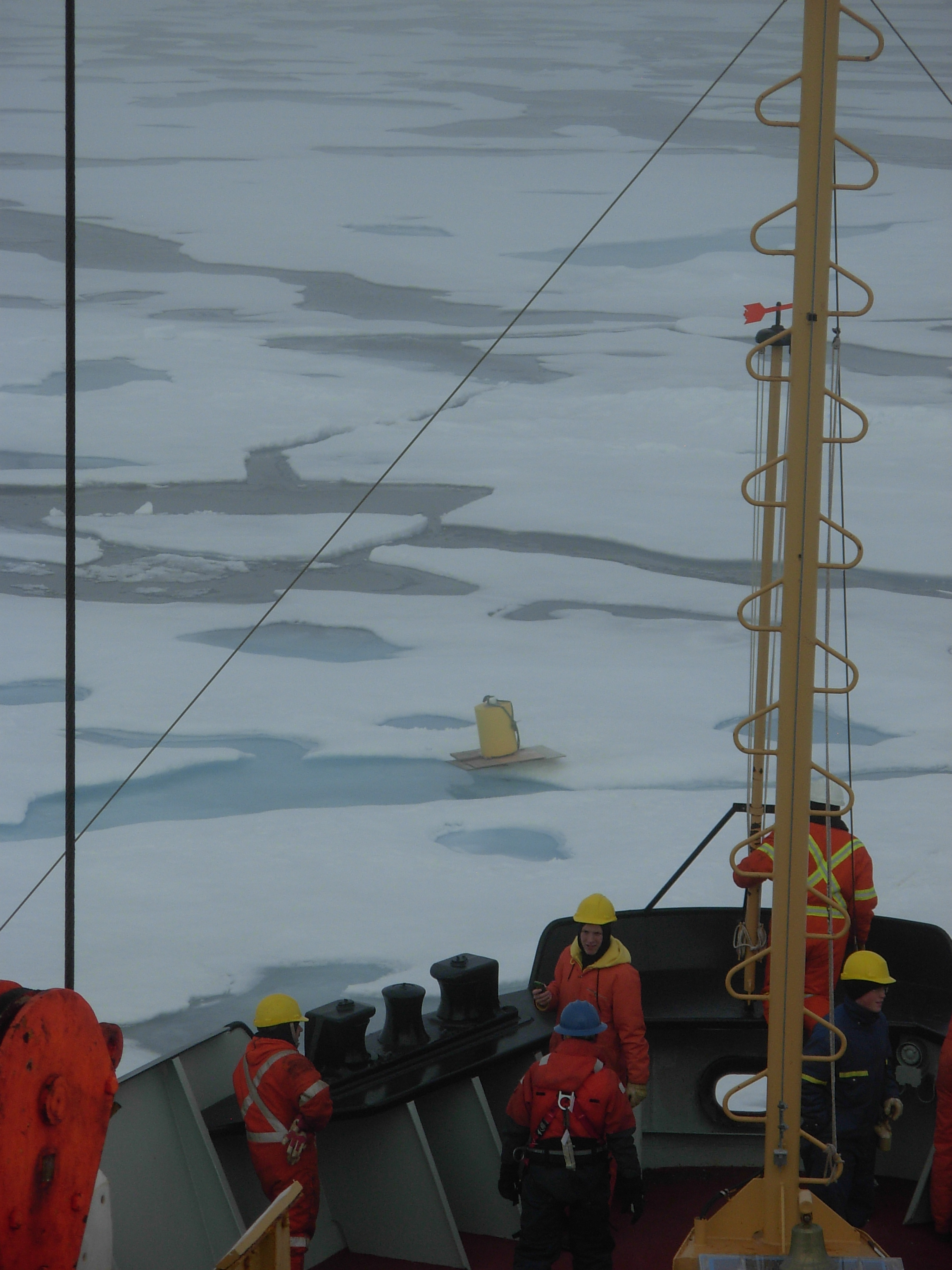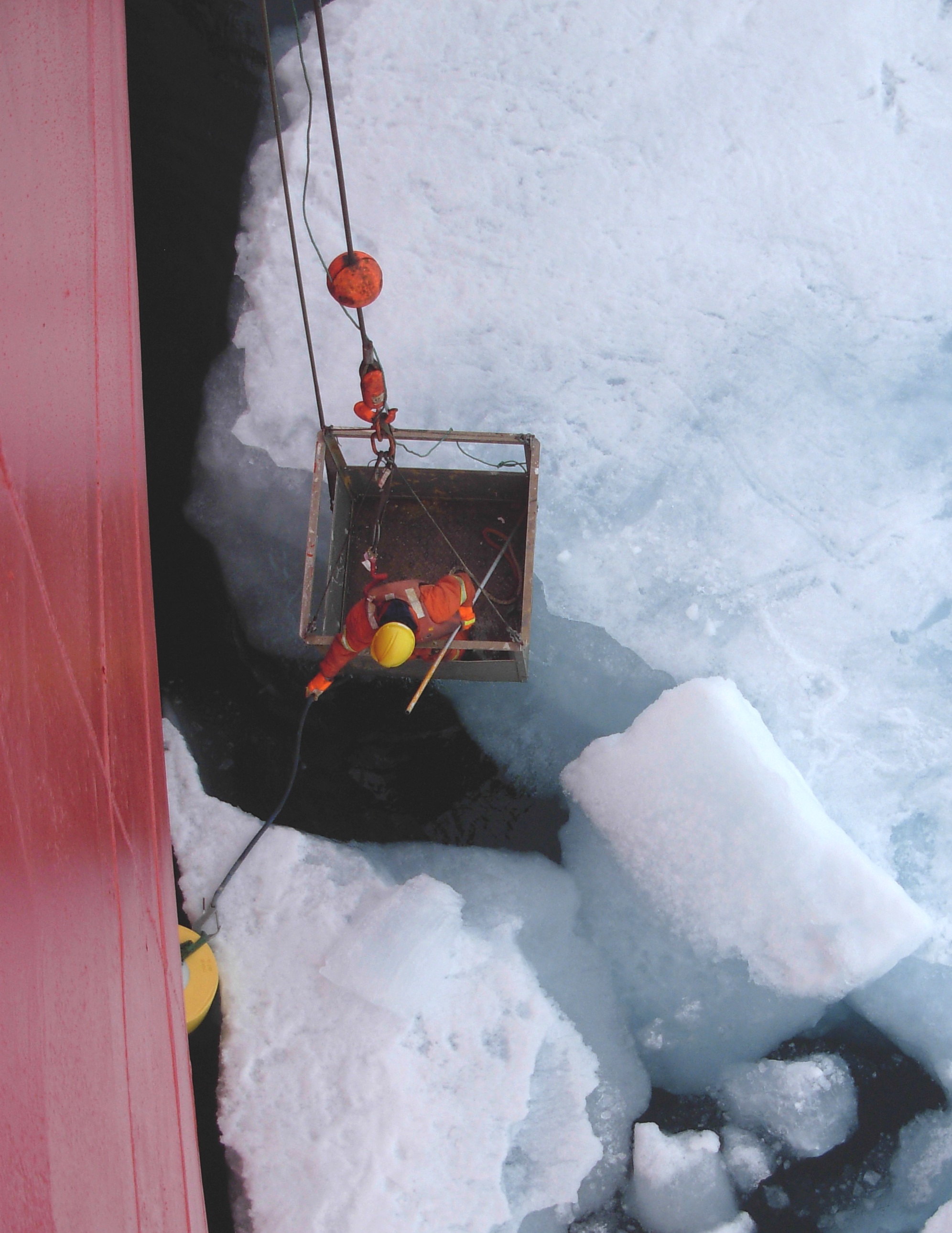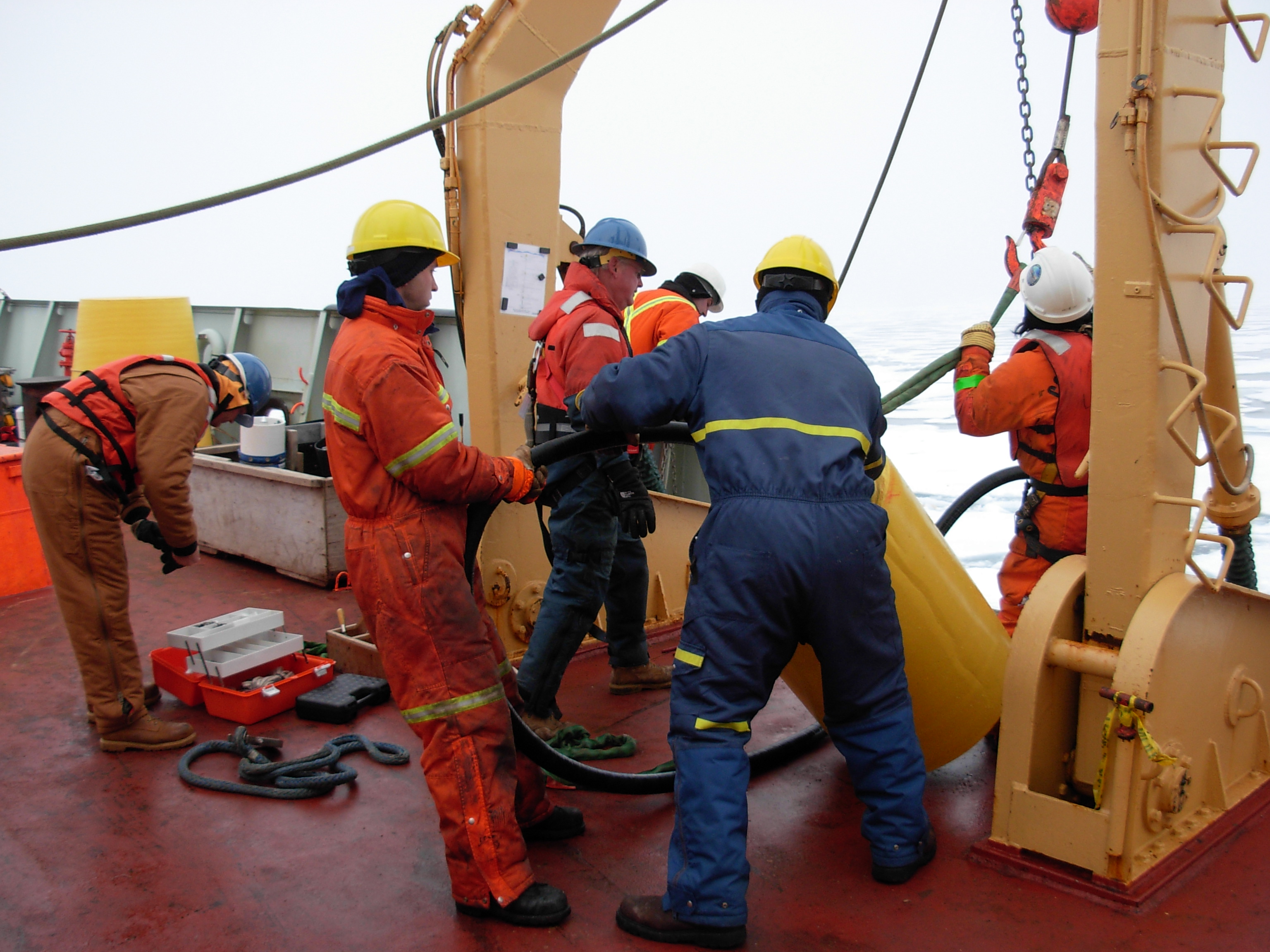ITP 33 Recovery Operations
During the JOIS 2011 expedition, the cruise would pass near the location of ITP 33 which had stopped receiving profile data from the underwater unit 7 months earlier. As the possibility existed that the profiler could still be acquiring profiles and storing this data internally, it was desirable to retrieve the system to perhaps rescue these data. A tracking command had been sent to the buoy via its Iridium connection, so that the unit would call in GPS locations hourly, which were then relayed to the ship. On the morning of August 2, 2011, the Louis was within 30 miles of the most recent location of the buoy, so the rescue operation was initiated.
The morning was clear and the ship's helicopter set off north to the last location, arrived at the site within 30 minutes, and immediately the surface package was spotted in a melt pond. Upon landing on the ponded floe, it was determined that the ice floe thickness was still 2.2 m thick. As the surface package was in a pond, we knew from previous experience that it would take a considerable amount of time to melt around the buoy to release it from the ice and be a very difficult operation (e.g. https://www.whoi.edu/page.do?pid=28864). Consequently, it was decided to break the buoy out of the ice by running it over with the icebreaker as had been done with ITP 21 (https://www.whoi.edu/page.do?pid=116516). A sling was attached to the surface package to provide a grab point, the buoy uprighted on plywood, and the helicopter and passengers returned to the ship.
A couple of hours later, the ship arrived at the site of ITP 33, released it from the ice, and the surface package was tagged and hauled onboard. Over the next half hour, approximately 300 m of tether were hauled onboard before the bitter end of the wire rope was reached. The mooring tether had apparently dragged over shallow bathymetry back during winter (as rust on the end of the wire indicated it had been some significant time since it had parted), and the profiler had likely profiled or dragged off of the open end.
More information and photos on the recovery operation are also available at: https://www.whoi.edu/page.do?pid=73838
